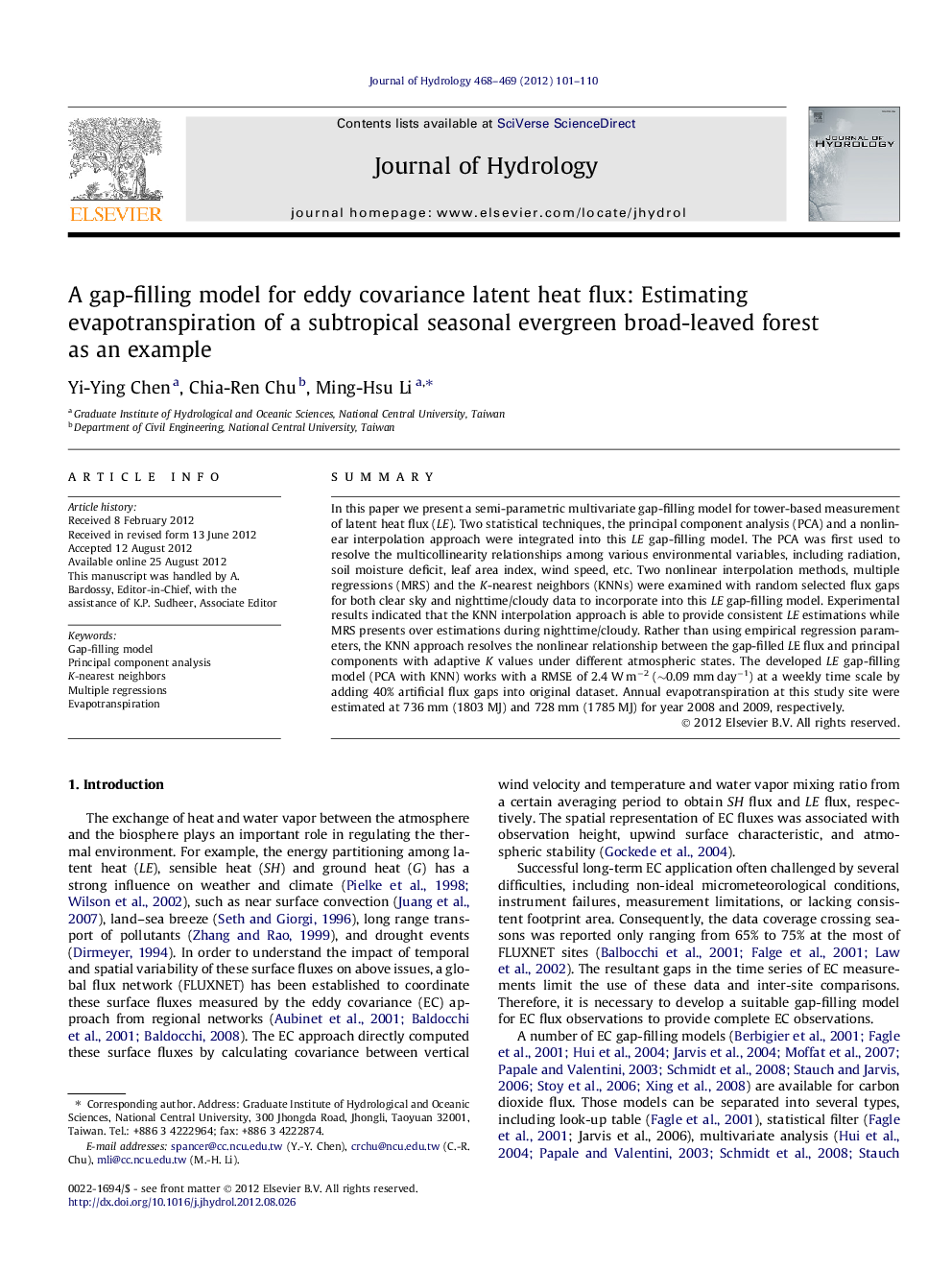| Article ID | Journal | Published Year | Pages | File Type |
|---|---|---|---|---|
| 4576781 | Journal of Hydrology | 2012 | 10 Pages |
SummaryIn this paper we present a semi-parametric multivariate gap-filling model for tower-based measurement of latent heat flux (LE). Two statistical techniques, the principal component analysis (PCA) and a nonlinear interpolation approach were integrated into this LE gap-filling model. The PCA was first used to resolve the multicollinearity relationships among various environmental variables, including radiation, soil moisture deficit, leaf area index, wind speed, etc. Two nonlinear interpolation methods, multiple regressions (MRS) and the K-nearest neighbors (KNNs) were examined with random selected flux gaps for both clear sky and nighttime/cloudy data to incorporate into this LE gap-filling model. Experimental results indicated that the KNN interpolation approach is able to provide consistent LE estimations while MRS presents over estimations during nighttime/cloudy. Rather than using empirical regression parameters, the KNN approach resolves the nonlinear relationship between the gap-filled LE flux and principal components with adaptive K values under different atmospheric states. The developed LE gap-filling model (PCA with KNN) works with a RMSE of 2.4 W m−2 (∼0.09 mm day−1) at a weekly time scale by adding 40% artificial flux gaps into original dataset. Annual evapotranspiration at this study site were estimated at 736 mm (1803 MJ) and 728 mm (1785 MJ) for year 2008 and 2009, respectively.
► We present a gap-filling model for eddy covariance latent heat flux. ► Flux gap was weighted with the principal components of the K-nearest neighbors. ► Clear sky (nighttime/cloudy) requires 30 (50) neighbors for interpolations. ► Evapotranspiration time series were consistently estimated with gap filled.
